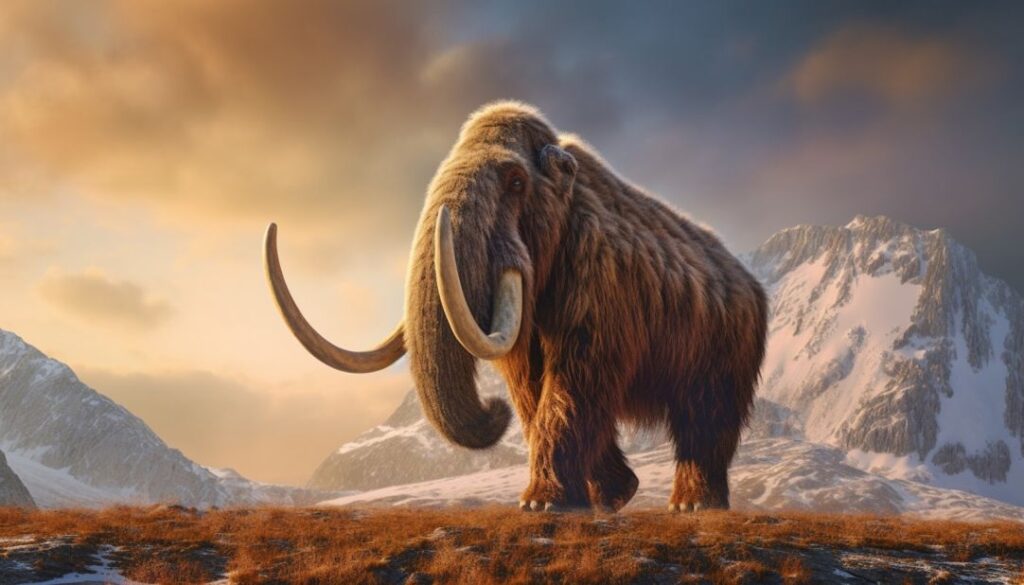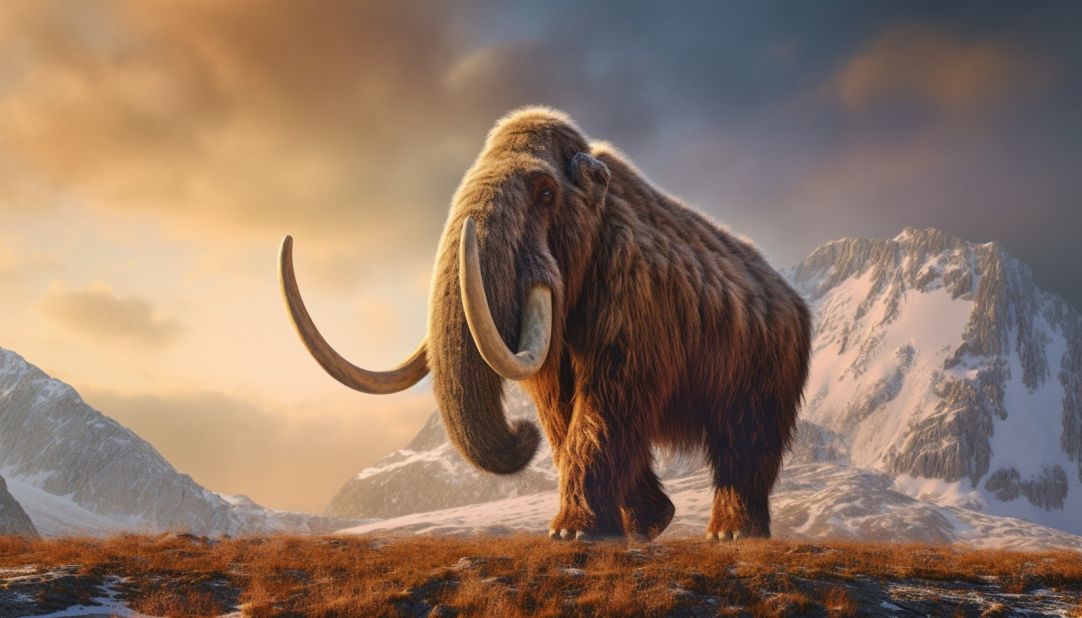
Unearthing the Past: The Story of a Female Mammoth from the Ice Age
The Ice Age, a period marked by dramatic climate shifts and the reign of megafauna, continues to captivate our imagination. Among these giants, the woolly mammoth stands out as an iconic symbol of resilience and adaptation. While much research has focused on the species as a whole, the stories of individual mammoths, particularly female mammoths from the Ice Age, provide invaluable insights into their lives, social structures, and eventual extinction. This article delves into the fascinating world of these ancient creatures, exploring what we’ve learned from the remarkable discoveries of female mammoths preserved in the permafrost.
The Significance of Mammoth Discoveries
The discovery of well-preserved mammoth remains, especially those of female mammoths, offers a unique window into the past. Unlike fragmented fossils, these finds often include soft tissues, stomach contents, and even DNA, allowing scientists to reconstruct their lives in unprecedented detail. Each discovery adds another piece to the puzzle, helping us understand their diet, health, environment, and the causes of their demise.
The preservation of these specimens is often due to being trapped in ice or frozen ground, which halts the natural decomposition processes. The Siberian permafrost, in particular, has proven to be a treasure trove of mammoth remains. The analysis of these remains is crucial to understanding the Ice Age.
Notable Female Mammoth Discoveries
Several remarkable discoveries of female mammoths have significantly advanced our understanding of these magnificent creatures. Here are a few notable examples:
Lyuba: A Baby Mammoth Frozen in Time
Lyuba, discovered in 2007 in Siberia, is one of the best-preserved mammoth specimens ever found. This female mammoth calf, estimated to be around one month old at the time of her death, provides an unparalleled glimpse into the early life of a woolly mammoth. Her internal organs, skin, and even some of her mother’s milk were remarkably intact. Scientists were able to determine her cause of death (likely drowning) and gain insights into her diet and overall health. The study of Lyuba has been instrumental in understanding the growth and development of young mammoths.
The Yuka Mammoth: A Window into Mammoth Behavior
The Yuka mammoth, also discovered in Siberia, is another significant find. While not as perfectly preserved as Lyuba, Yuka’s remains showed evidence of human interaction, including possible cut marks. This suggests that humans may have hunted mammoths during the Ice Age. The Yuka mammoth was a juvenile female mammoth. The discovery highlights the complex relationship between humans and mammoths and the potential role of human hunting in their extinction. [See also: The Role of Humans in Mammoth Extinction]
The Sopochnaya Karga Mammoth: DNA and Genetic Insights
The Sopochnaya Karga mammoth provided valuable DNA samples, which have been used to study the genetic makeup of woolly mammoths. These genetic studies have helped scientists understand their evolutionary history, genetic diversity, and adaptations to the cold climate. The analysis of female mammoth DNA, in particular, can reveal information about maternal lineages and population structures. The DNA extracted from this specimen is crucial for understanding the mammoth’s genetic code.
What We Learn from Female Mammoths
The study of female mammoths from the Ice Age provides a wealth of information about their lives and the environments they inhabited. Here are some key areas of knowledge gained from these discoveries:
Social Structure and Family Life
Analyzing the remains of female mammoths, especially those found in groups, can shed light on their social structures. It’s believed that mammoths lived in matriarchal herds, similar to modern elephants, with older females leading the group and providing guidance to younger members. The discovery of related female mammoths together supports this theory.
Diet and Environment
The analysis of stomach contents and tooth wear patterns reveals valuable information about the diet of female mammoths. They primarily grazed on grasses, sedges, and other vegetation found in the Ice Age steppe. The study of pollen and plant fragments preserved alongside mammoth remains helps reconstruct the environment they lived in.
Health and Disease
Examining the bones and tissues of female mammoths can reveal signs of disease, injury, and nutritional deficiencies. This information provides insights into the health challenges they faced in their harsh environment. Some specimens have shown evidence of arthritis, parasites, and other ailments.
Reproduction and Life Cycle
The study of female mammoth reproductive organs can provide information about their reproductive cycles, gestation periods, and age at first reproduction. This is crucial for understanding their population dynamics and how they were affected by environmental changes. The size and development of calf remains, like Lyuba, also provide insights into their growth rates.
The Mystery of Mammoth Extinction
One of the most pressing questions surrounding mammoths is why they went extinct. While the exact causes are still debated, several factors are believed to have contributed to their demise. The study of female mammoths plays a crucial role in unraveling this mystery.
Climate Change
The end of the Ice Age brought about significant climate changes, including warmer temperatures and shifts in vegetation. These changes may have reduced the availability of suitable grazing lands for mammoths, leading to food shortages and population declines. Some researchers believe that female mammoths, particularly those who were pregnant or nursing, were especially vulnerable to these changes.
Human Hunting
As mentioned earlier, evidence suggests that humans hunted mammoths during the Ice Age. While the extent of human impact is debated, some researchers believe that hunting played a significant role in their extinction, especially when combined with the pressures of climate change. The discovery of mammoth remains with cut marks provides further evidence of this interaction. [See also: The Impact of Climate Change on Ice Age Megafauna]
Disease and Genetic Factors
Disease outbreaks and genetic bottlenecks may have also contributed to the extinction of mammoths. Small, isolated populations are more vulnerable to these factors. The study of mammoth DNA can reveal information about their genetic diversity and susceptibility to disease. Analyzing the DNA of female mammoths is especially important for understanding the genetic health of the population.
The Future of Mammoth Research
The study of female mammoths from the Ice Age continues to be an active area of research. New discoveries are constantly being made, and advances in technology are allowing scientists to analyze these remains in ever greater detail. Here are some exciting areas of future research:
Cloning and De-Extinction
The possibility of cloning mammoths and bringing them back from extinction has captured the public’s imagination. While this is still a long way off, advances in genetic engineering are making it increasingly feasible. The availability of well-preserved mammoth DNA, especially from female mammoths, is crucial for this endeavor. [See also: Ethical Considerations of De-Extinction]
Understanding Climate Change Impacts
Studying the adaptations of mammoths to the Ice Age environment can provide valuable insights into how species respond to climate change. By understanding how female mammoths and other megafauna adapted to past climate shifts, we can better predict how modern species will respond to current and future changes.
Preservation and Conservation
As the permafrost thaws due to climate change, more mammoth remains are being exposed. It’s crucial to preserve these specimens and protect them from damage. This requires international collaboration and the development of ethical guidelines for the excavation and study of these ancient creatures. Ensuring the proper handling of female mammoth remains is paramount to maximizing their scientific value.
Conclusion
The story of the female mammoth from the Ice Age is a captivating tale of survival, adaptation, and eventual extinction. Through the remarkable discoveries of well-preserved remains, scientists are piecing together the lives of these magnificent creatures and gaining valuable insights into their social structures, diet, health, and the causes of their demise. As research continues, we can expect to learn even more about these ancient giants and their place in the history of our planet. The study of female mammoths, in particular, offers a unique and powerful perspective on the Ice Age and the challenges faced by life in a changing world.

